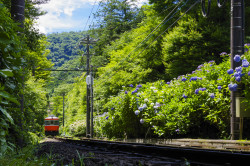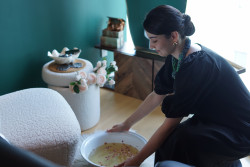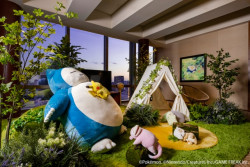
February 10, 2011
300 Years of Meissen
The Suntory ramps it up with some rocking rococo ceramics
By Metropolis
Originally published on metropolis.co.jp on February 2011

Images Courtesy of Museum of Meissen Art
It’s just a fact that we have to live with, but obasan are the dominant demographic of museum-goers in Tokyo.
Of course, some art spaces do try to pull in a younger, hipper crowd, usually spurred on by injections of public cash or the need to win trendiness points for the mixed-use developments of which they are part. (Yes, Mori Art, you’ve been rumbled.) But, basically, the smart venues know that if you want to pack them in, you’ve got to aim your exhibitions at that soft, gooey, essentially bourgeois spot deep in the heart of most middle-aged Japanese women.
For that reason, “300 Years of Meissen” at the Suntory Museum of Art is not the kind of exhibition you’d normally associate with a stylish young crowd of überkool urbanites. But if you stay away because high-end European ceramics remind you too much of Aunt Agatha’s musty tea parties, then you’ll be missing out on one of the best, most dynamically artistic and delightful exhibitions of the year.
The story of the origin of Meissen’s famed porcelain reads like an industrial espionage thriller. The factory was set up in the German principality of Saxony in the early 18th century to clone and compete with much-prized Chinese exports of porcelain, a particularly tough and translucent ceramic material that had been known in the East for around 2,000 years.
Through a series of experiments with the local kaolin clay, German chemists like Johann Friedrich Böttger were finally able to break the Chinese code and make a comparable product, thus providing Saxony with a valuable new source of income, which it in turn tried to keep secret from other European states.
The first products from the new factory simply aped Chinese styles. The exhibition has several examples, and one of the lesser pleasures is looking for Germanic touches in these subtle fakes. But Meissen quickly grew tired of the Chinese lack of artistic ambition, and soon started mainlining on the European artistic inspirations of the day, namely the rich, ornate rococo style.
What strikes the visitor most is the exuberance and panache of these 18th-century designs. They are decorated and embellished, and then decorated some more—just for the hell of it. The perfect example is the “snowball teapot” (above left) by the legendary modeler Johann Joachim Kändler.
Another Kändler masterpiece is “Swan Service Ornamental Tureen” (1738). This glorified soup bowl swarms with mermaids, cupids, flowers and swans, while on the lid a naked Venus rises from the waves on the back of a whale that blows two porcelain streams of water from its nostrils, a lively touch that gives us the impression of the sea creature having just surfaced. This is the ceramic equivalent of a heavy metal band turning the amps up to 11.
The wealth of detail in so many works gives an incredible amount of energy to the pieces. In “The Caught Lover” (1771), a pair of figurines showing a husband discovering his timid rival, it is the tiny figure of a dog poking his nose under the couch that gives us a sense of the drama unfolding.
The exhibition faithfully documents Meissen’s long history, including examples of the more sedate neoclassical designs that came into fashion in the 19th century, and even some items manufactured under the aegis of the East German state during the dark years of Communism. But luckily, most of the show is dedicated to Meissen’s radiant rococo heyday.
Suntory Museum of Art
Until Mar 6, free (MS and under)/¥1,000 (HS, univ)/¥1,300 (adult). 9-7-4 Akasaka, Minato-ku. Tel: 03-3479-8600. Open Wed-Sat 10am-8pm, Sun-Mon & hols 10am-6pm, closed Tue. Nearest stn: Roppongi. www.suntory.com/culture-sports/sma







